By Alex Trukan
Recent years has seen a rise in formations and styles of play overloading midfield areas and getting away from the traditional role of number ‘9’, replacing it with a ‘false 9’ and formations like 1-4-6-0. That has pointed many coaches’ attention to possible alternative roles strikers can have. One of the more unorthodox methods of using strikers is support for midfielders in ‘play making’. That might include deeper movements beyond opposition’s midfield line, getting into ‘play making’ positions as well as more subtle runs to create options for combination play around the ball. Vertical movements towards own half can be especially helpful in creating overloads as opposition centre backs will usually hold the line leaving the striker unmarked.
That type of more traditional movement towards own goal to support midfielders might be made into space between opposition midfield and defending units as well as beyond midfield unit. Moving beyond or in between the midfielders will usually force midfielders to mark rather than centre back tracking the run. That in turn will free up spaces for other midfielders. In case nobody marks the striker dropping deeper, he will remain a free man to use to play out.
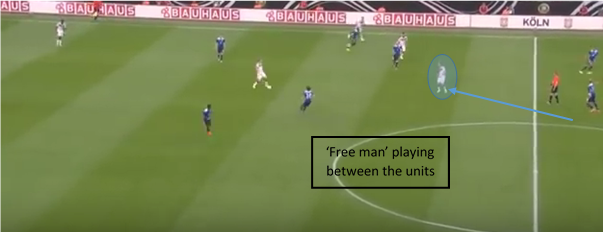
Staying between opposition’s back and midfield lines and moving horizontally has other benefits. For example, movement towards one of the wide midfielders would create an opportunity to combine play on the wing by playing around the corner. It would also help to split the centre backs and narrow up the back line what would open up spaces on the opposite wing.
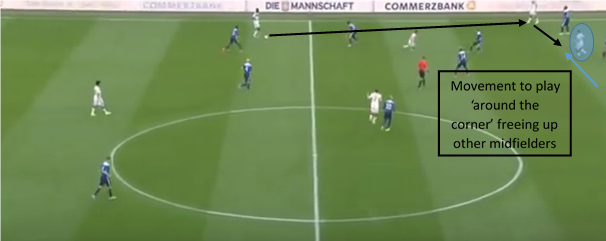
Receiving in front of the back line can also put a striker in a play making position. For example, it becomes increasingly popular to utilise number ‘9’ in switching play from one to another wing and circulating the ball horizontally. It also creates opportunities for one of the midfielders to make a forward run.
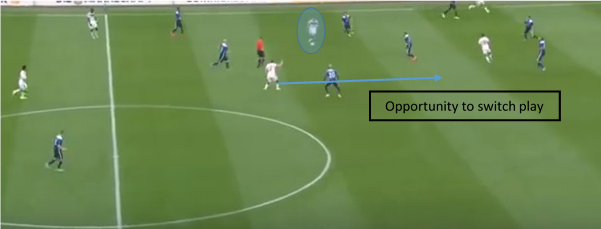
If turning to face forwards/sideways is not possible (i.e. when marked tight), striker’s movement might still create additional opportunity to play a wall pass and transfer the ball between midfielders. Ideally, two midfielders should stay behind the ball when third one would make a forward run creating an option to play beyond the back line.
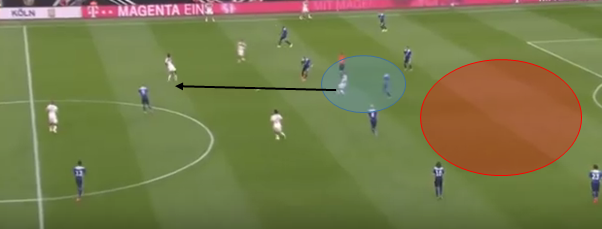
When playing with two strikers, subtle movement away from each other would help to split the centre backs leaving a gap between them. That would encourage one of the strikers to spin around the inside shoulder of the centre backs and go forwards. Created gap provides additional opportunity for a through ball and encourages direct penetration rather than combination play between strikers.
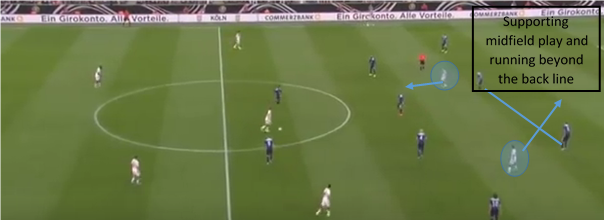
This kind of movement can really unbalance the opposition especially as the play is switched from one side to the opposite and strikers stay wide. That would initially overload both wide areas but it is only false perception as the central areas are left to make movements into in the latter phases of attack.
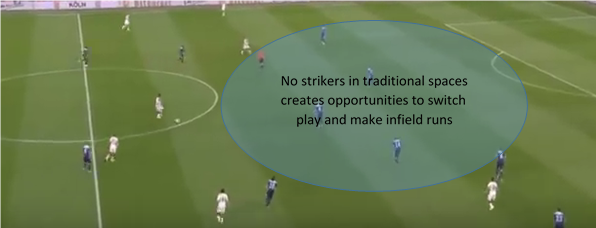
Recent changes in the roles and responsibilities of the striker as well as the shift from a traditional ‘number 9’ into a ‘false 9’ has placed different technical demands on the players. Strikers become more sophisticated technically with an ability to play in tight spaces as well as intelligence to be a playmaker.
By Alex Trukan, Development Coach, Nottingham Forest
@AlexTrukan


